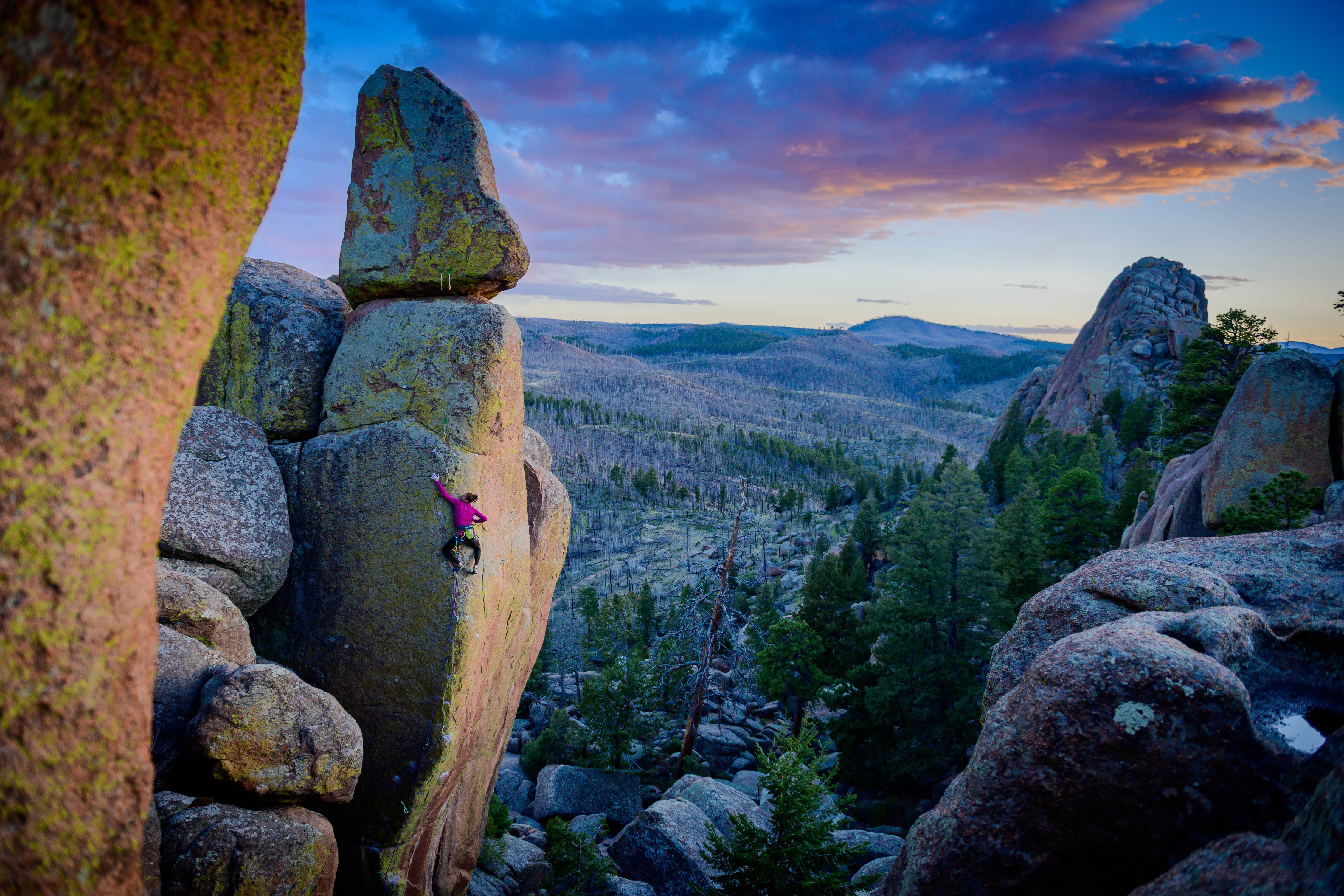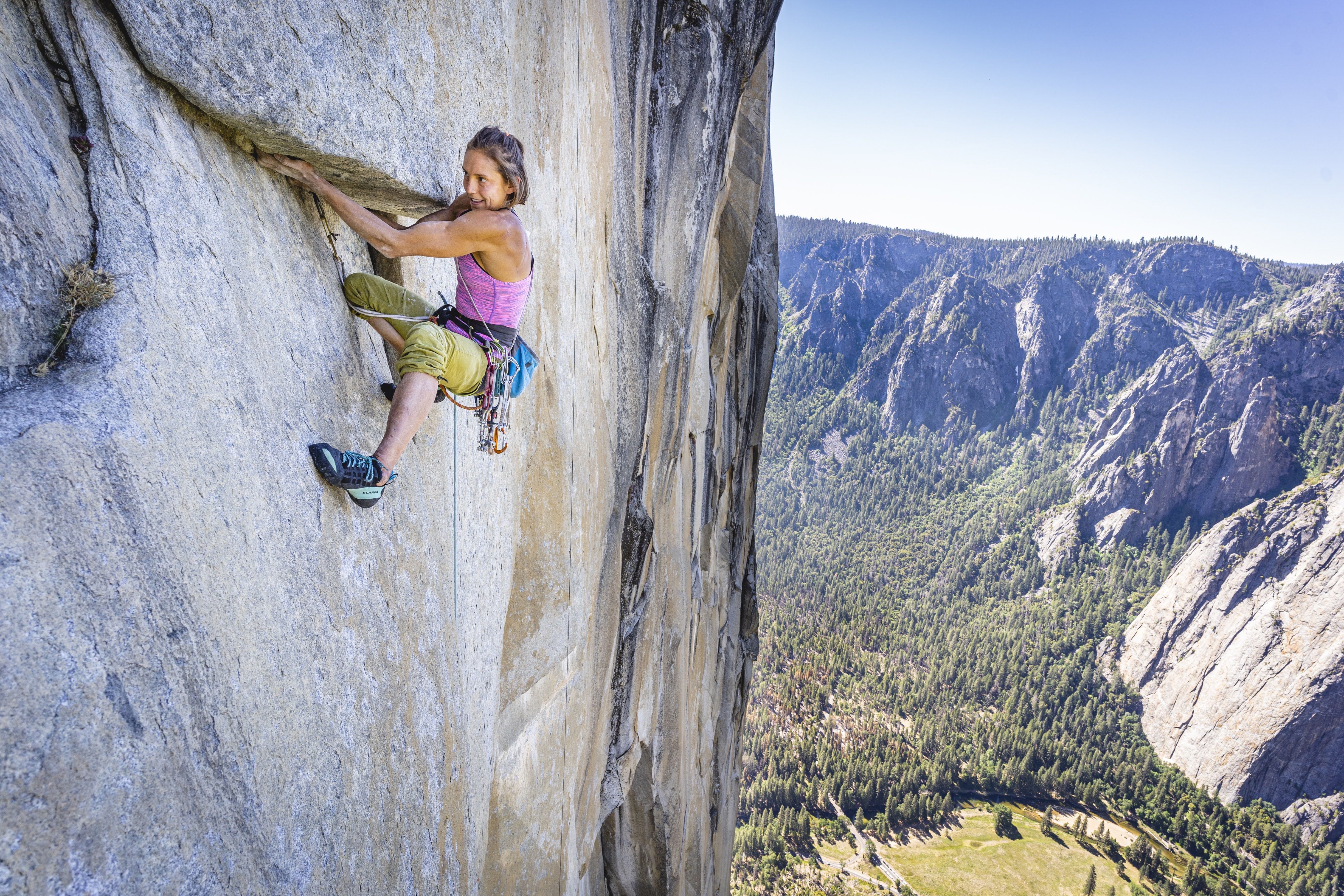Underfueling: The Ultimate Sandbag
11-17-2020
Learn about Low Energy Availability and how to properly fuel for you adventure
Amity Warme

Originally posted by STERLING
I love trying really freaking hard. I love digging deep, tapping the last reserves, and emptying the tank as I push my limits physically and mentally on the rock. I pursue climbing as a way of life because I enjoy exploring new places, meeting fellow adventure enthusiasts, and playing in the great outdoors. I am currently pursuing a Master’s degree in Sport Nutrition at the University of Colorado in Colorado Springs. My goal is to help athletes use nutrition to maximize their health and performance. Through my studies, I have grown aware of the past inadequacy of my own dietary practices as well as the widespread acceptance of an unhealthy approach to food, diet, and weight throughout the climbing community. In this article, I want to draw attention to the pervasive presence of Low Energy Availability (LEA) among climbers, explain the detrimental effects of LEA, and reframe the conversation around body image and performance.
What is LEA, how does it occur, and why is it a concern?
A recent research study surveyed a sample of climbers regarding their dietary intake and attitudes toward food. The results indicated that 82% of respondents were not consuming enough energy on a daily basis – on average these participants only met 79% of their daily energy needs. Many in the climbing community mistakenly prioritize low body weight and leanness while neglecting the role of food as fuel for optimal performance, growth and development, and long-term health.
Low energy availability occurs when the amount of energy expended through physical activity is greater than the amount of energy taken in from food.

Energy Output > Energy Intake = Low Energy Availability
As a result, the body does not have enough energy to support physiological functions needed to maintain optimal health. LEA can impact athletes whether they are consciously regulating their energy consumption (through chronic calorie restriction, fasting, skipping meals, restricting food groups, and/or using diet pills or laxatives), or whether they are unconsciously under-fueling relative to amount of energy expended through output (training, climbing, and other physical activity). Weight conscious climbers can quickly over-train and under-eat themselves into a state of LEA, leading to the compromise of nearly every system of the body as well as diminished performance capacity.
Negative effects of LEA on health and performance include:
- Chronic Fatigue
- Anemia
- Recurring infections and illnesses
- Irritability and mood changes
- Depression
- Gastrointestinal problems (constipation and discomfort)
- Disordered eating thoughts
- Reproductive issues (absent or irregular menstrual cycles, decreased sex-drive)
- Weight loss
- Decreased bone density (osteopenia and osteoporosis)
- Stress fractures or repeated bone injuries
- Chronic tendon injuries
- Decreased muscle strength
- Inability to gain muscle or build strength
- Training hard but not improving performance
- Inability to recover after training
- Decreased coordination and concentration
My experience sandbagging myself with inadequate nutrition:
“I did not yet understand that the mismatch between my energy intake and energy output was harming my health and hindering my performance. So I just kept training harder.”
Climbing culture often portrays the ‘ideal’ climber body as skinny and strong, twiggy and toned, light and lean. This representation sets the stage for comparison (“my body image doesn’t match the mold”) and body dissatisfaction (“I need to change the body I have”). To define our terms, body image is the personal interpretation of outward appearance. This can be influenced by context, cultural norms, and the media. Body dissatisfaction occurs when a discrepancy exists between one’s own body image and the perceived ideal body. Research indicates that body dissatisfaction is extremely prevalent among athletes, especially female athletes and those in weight sensitive or aesthetic sports such as climbing, gymnastics, dance, and figure skating. Too often, we fall prey to the notion that becoming a better climber requires commitment to dieting, chronic calorie restriction, and continual weight loss. While gravity is real, it is too simplistic to believe that weight is the determining factor between success or failure.
Anecdotally, I can attest to the prevalence of this widespread body dissatisfaction among climbers. During a semester, I provided individual nutrition counseling to 15 climbers at a local climbing gym. Regardless of current weight or climbing ability, almost everyone reported weight loss as their top nutrition priority. Weight loss makes sense for someone who is overweight or obese, but that was not the case for this population. Nearly everyone reported low energy, inability to complete a training or climbing session without feeling fatigued, and desire to improve performance. Despite acknowledging chronically low energy levels and diminished performance returns, these individuals still reported conscious, long-term restriction of energy intake and avoidance of certain foods or food groups. As a whole, they expressed dissatisfaction with their body and a negative relationship to food. What would it look like to approach food and body weight from a positive perspective?
“Instead of pursuing a weight loss goal (‘I need to lose 5 pounds to be able to climb hard’), choose to focus on a performance goal (‘I want to send my project’).”
Meeting your body’s energy requirements leads to:
- Increased energy levels
- Better endurance on the wall
- Higher power output
- Normal levels of reproductive hormones (estrogen and testosterone)
- Weight stability
- Improved mental health
- Better sleep patterns
- Maintenance of bone density
- Lower risk of injury
- Increased muscle strength
- Ability to gain muscle and build strength
- Better returns on training effort
- Faster recovery after training
- Increased coordination and concentration
- Stronger immune system
Imagine what you can do if you give your body the fuel it needs!
My experience dialing in the nutrition beta:
“This attention to proper nutrition and adequate fueling ensures that my energy level always matches my stoke.”
As I have progressed in my formal nutrition education and sought out resources explaining the negative impacts of under-fueling as well as the benefits of proper nutrition, I made changes in my own dietary habits. I make sure my food intake is in balance with my energy output. On hard training or long climbing days I consume probably 750-1000 more calories than a year ago. I fuel with carbohydrate rich foods before, during, and after exercise and I am conscious to consume protein throughout the day to support muscle growth and repair. This attention to proper nutrition and adequate fueling ensures that my energy level always matches my stoke. Of course, I still get tired and I still have to take rest days. Nutrition will never make me superhuman, but I am sending my hardest climbs and having a blast. I’m not dealing with chronic injuries or fatigue and I have a positive relationship with food. Instead of micromanaging my diet, I now feel the freedom and have the energy to explore the limits of my capabilities and try really freaking hard.
“We must shift the tone of the conversation around body image to encourage acceptance and promote a healthy approach to nutrition.”
Low Energy Availability is a serious issue facing the climbing community. On an individual level, adopting this “light weight is the right weight” mentality puts one at risk for a cascade of health problems in addition to decreased performance. On a community level, the acceptance of this negative approach to food, weight, and body image encourages climbers to risk their health for the sake of looking like the “ideal climber.” Let’s choose a different route! Collectively, we must shift the tone of the conversation around body image to encourage acceptance and promote a healthy approach to nutrition. Personally, I learned to embrace the body I have and continue to strive to consume enough energy to meet the demands of being an athlete. I hope my story encourages and empowers you to approach food in a positive way, where nutrition serves as a tool to fuel your performance and foster long-term health.
